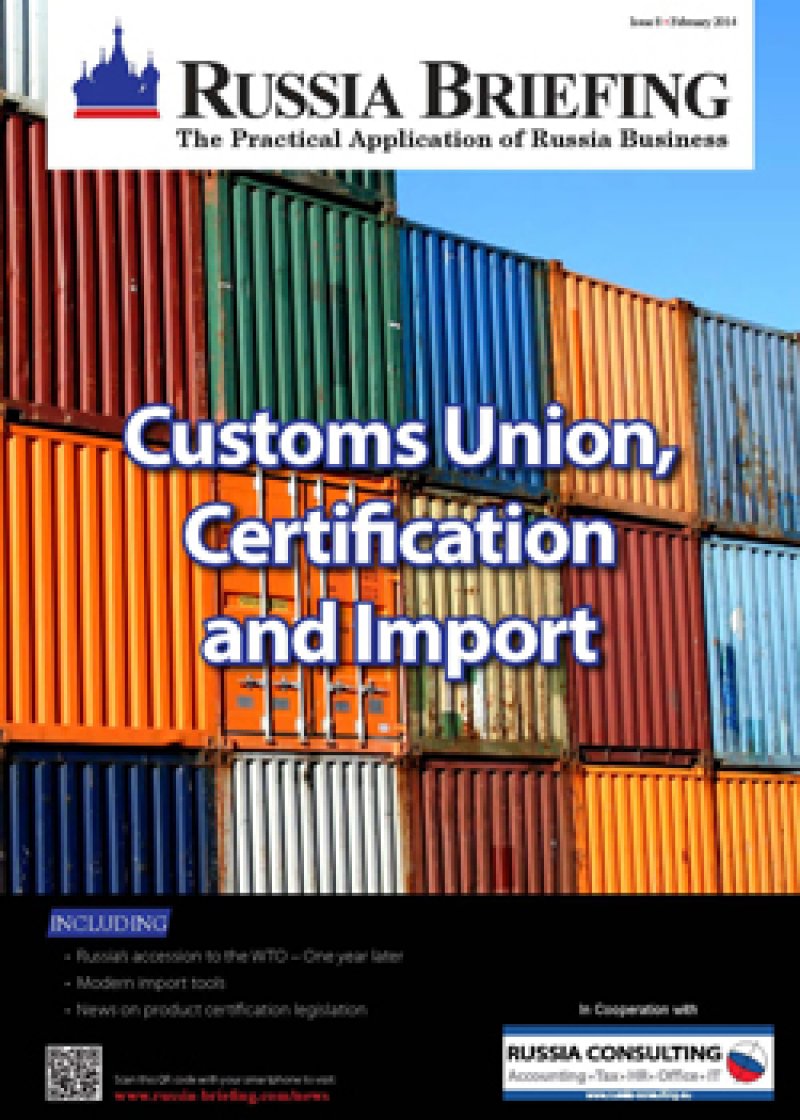
Customs Union, Certification and Import
Published: February 2014In this issue of RUSSIA BRIEFING, we take a close look at the import and export procedures into, out of, and within the Russia, Belarus and Kazakhstan Customs Union. We then look at the current situation one year after Russia’s WTO accession. Next we look at issues of product certification and VAT procedures in the Customs Union. Finally, we explain the processes involved with the import of goods between affiliate companies.
In this issue:
- General Introduction into the Customs Union
- Russia’s Accession to The WTO – One year later
- News on Product Certification Legislation
- VAT procedures in the Customs Union
- Import of Goods Between Affiliate Companies
After the breakdown of the Soviet Union, there have been constant efforts to build up a Customs Union and common economic space among the post-Soviet countries which is mainly pushed forward by the regional power, Russia. The Eurasian Customs Union treaty, signed in 2007 by Russia, Kazakhstan and Belarus emerged from much weaker forms of cooperation, such as the CIS Customs Union and the Eurasian Economic Community.
On January 1, 2010, the Customs Union of Russia, Belarus and Kazakhstan went into effect with the introduction of a unified customs code and unified customs tariffs. By 2015, the Eurasian Economic Union is scheduled to be fully operating. Ideas for the future are further integration with a common monetary policy, common migration policy and a common system of standards and technical regulation.
With the increasing importance of the emerging markets of the former Soviet Union, the Customs Union’s importance in international trade is quickly increasing. Additionally, under Russia’s lead, the Customs Union is set to expand and consequently further increase its importance and power in international trade. Armenia recently announced their decision to join. Other candidates are Kyrgyzstan, Tajikistan and Ukraine, whereas other former Soviet Union states, such as Uzbekistan, Turkmenistan, Azerbaijan, and Georgia seem to be unwilling to join.
The potential candidates are pushed by two sides to either enter free-trade agreements with the European Union or join the Russian-led Customs Union. It is a political decision to join either side at least as much as it is an economic question. Sooner or later, a decision in favor of one side or the other will have to be taken. However, there are hopes that the future will bring closer ties or even a free-trade treaty between the European Union and the Eurasian Economic Union.
The Customs Union brings a lot of simplifications and new opportunities for both exporters into the Union as well as organizations with production facilities within the countries of the Customs Union.
Within this issue of RUSSIA BRIEFING, we will have a closer look at import and export procedures into, out of, and within the Customs Union. Several steps have been taken to simplify the procedures. Among them, there are electronic declarations and standardized certifications. The certifications shall have validity not only for one, but for all Customs Union countries and are gradually replacing the old certifications which have been valid for only one country and had to be done for each of the three member countries individually.
The content of this magazine was compiled by SCHNEIDER GROUP (RUSSIA CONSULTING) staff in Russia.

